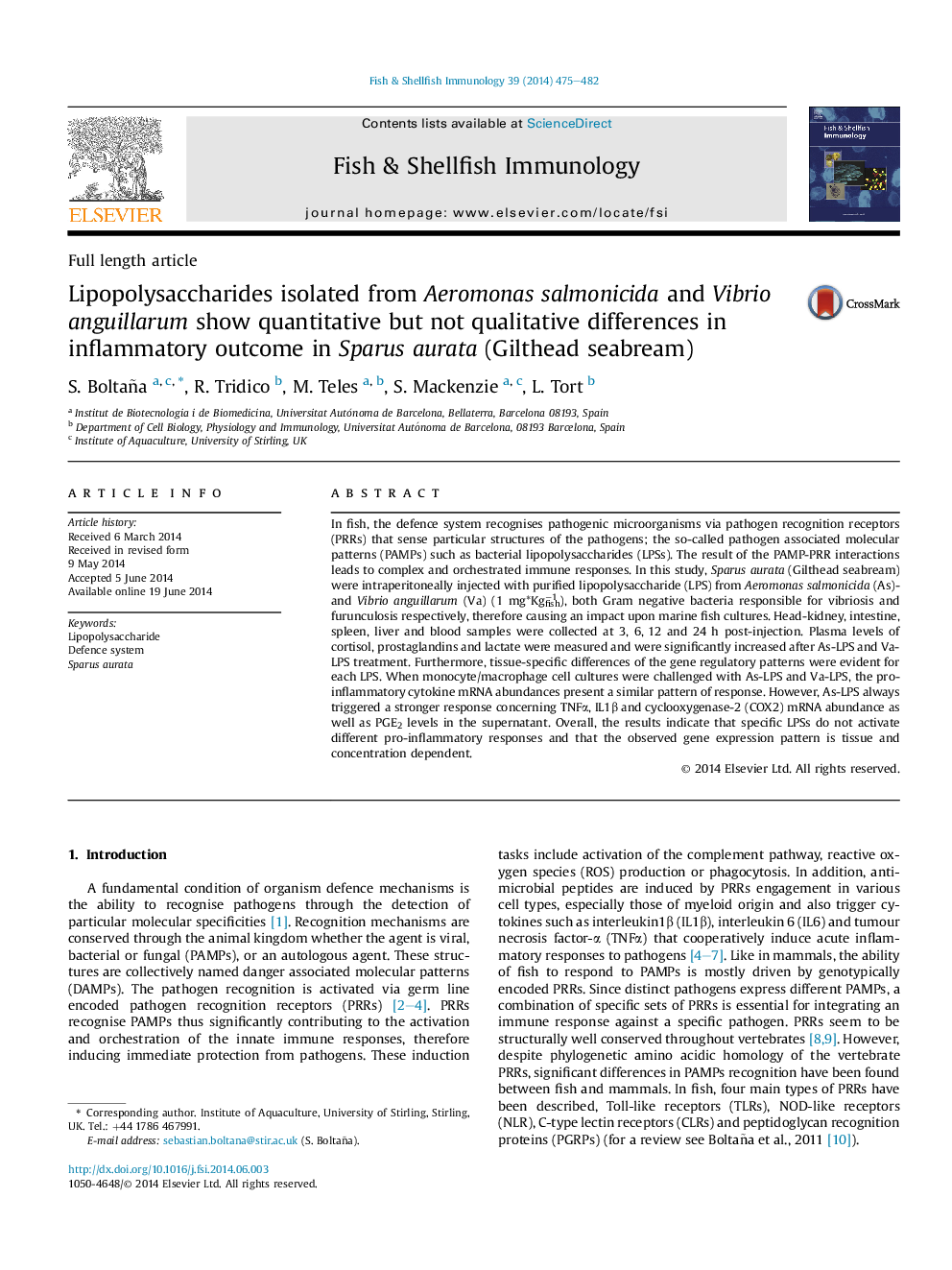| Article ID | Journal | Published Year | Pages | File Type |
|---|---|---|---|---|
| 2431607 | Fish & Shellfish Immunology | 2014 | 8 Pages |
•We model incorporates LPS-self extracted from fish pathogens and commercial LPS.•We explore the defence response of pathogenic and non-pathogenic fish bacteria.•The response pattern highlights changes in the cytokine mRNA abundance.•The pathogenic LPS also promote the plasma stress parameters.•The cytokine mRNA abundances are temporal- and tissue-dependent.
In fish, the defence system recognises pathogenic microorganisms via pathogen recognition receptors (PRRs) that sense particular structures of the pathogens; the so-called pathogen associated molecular patterns (PAMPs) such as bacterial lipopolysaccharides (LPSs). The result of the PAMP-PRR interactions leads to complex and orchestrated immune responses. In this study, Sparus aurata (Gilthead seabream) were intraperitoneally injected with purified lipopolysaccharide (LPS) from Aeromonas salmonicida (As)- and Vibrio anguillarum (Va) (1 mg*Kgfish−1), both Gram negative bacteria responsible for vibriosis and furunculosis respectively, therefore causing an impact upon marine fish cultures. Head-kidney, intestine, spleen, liver and blood samples were collected at 3, 6, 12 and 24 h post-injection. Plasma levels of cortisol, prostaglandins and lactate were measured and were significantly increased after As-LPS and Va-LPS treatment. Furthermore, tissue-specific differences of the gene regulatory patterns were evident for each LPS. When monocyte/macrophage cell cultures were challenged with As-LPS and Va-LPS, the pro-inflammatory cytokine mRNA abundances present a similar pattern of response. However, As-LPS always triggered a stronger response concerning TNFα, IL1β and cyclooxygenase-2 (COX2) mRNA abundance as well as PGE2 levels in the supernatant. Overall, the results indicate that specific LPSs do not activate different pro-inflammatory responses and that the observed gene expression pattern is tissue and concentration dependent.
